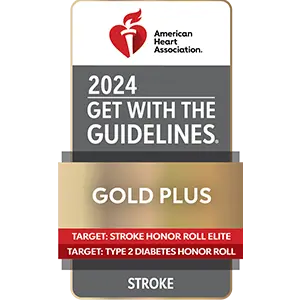Stroke Center
NewYork-Presbyterian/Lower Manhattan Hospital is a New York State Department of Health designated Primary Stroke Center. This designation means the Hospital has demonstrated that it provides efficient and high quality evaluation and treatment to patients with stroke. Our Stroke Team is available 24 hours a day, and our advanced telemedicine technology allows our neurologists to examine patients at any hour. We work with our Emergency Department colleagues who are all trained in acute stroke care.
Our facility utilizes on-site diagnostic modalities to evaluate patients:
- CT scans
- MRI scans
- Laboratory testing
- Vascular ultrasound
- Cardiac monitoring and imaging
Our Emergency Room, Intensive Care Unit, and Stroke Unit are covered by nursing staff who are trained to take care of patients with stroke. Our physical and occupational therapists and rehabilitation medicine physicians work with patients in the hospital to start the recovery process.
About Stroke
Stroke is the fourth leading cause of death and the leading cause of disability in the United States. Individuals should be aware of their risk factors and learn how to lower their risk of stroke.
Common risk factors for stroke include:
- Hypertension
- Diabetes mellitus
- High cholesterol
- Smoking
- Carotid stenosis
- Atrial fibrillation
- Postmenopausal hormone therapy
- Physical inactivity
- Obesity
Prevention of Stroke
See your doctor regularly to monitor for risk factors for stroke. Strategies to lower the risk of stroke include:
- Lifestyle modification (see below) and medications if needed for high blood pressure
- Lifestyle modification and medications if needed for high cholesterol
- Treatment of diabetes
- Blood thinners for eligible patients with atrial fibrillation
- Avoidance of long-term hormone replacement therapy in postmenopausal women
Lifestyle Modification Recommendations
- Stop smoking
- Low sodium (less than 1500 mg a day) diet
- Diet rich in fruits and vegetables, lean meats and fish, nuts and olive oil, similar to the Mediterranean diet
- Moderate alcohol intake: two drinks a day or less for men and one drink a day or less for women
- Physical activity: 30 minutes or more of moderate activity daily
- Maintain a normal BMI
The above risk factor strategies apply for patients who have had a stroke. Additional treatments may include:
- Antiplatelet medications, for example aspirin
- More aggressive treatment of cholesterol
- Surgery or stenting of a blockage in the carotid artery Screening and treatment of sleep apnea
- Screening for depression which is commonly seen after a stroke
Signs and Symptoms of Stroke
All patients and family members should be aware of signs and symptoms of stroke that include:
- Sudden and severe headache
- Loss of vision
- Difficulty with speech
- Drooping of the face
- Weakness on one side
- Numbness on one side
- Difficulty walking
Acute treatments of stroke can be offered only within a narrow time window so it is important to call 911 to be taken to an emergency room as quickly as possible. Patients who arrive within 4 1/2 hours may be eligible for treatment.




